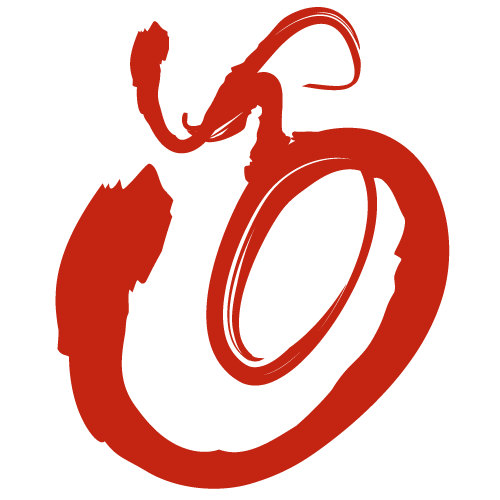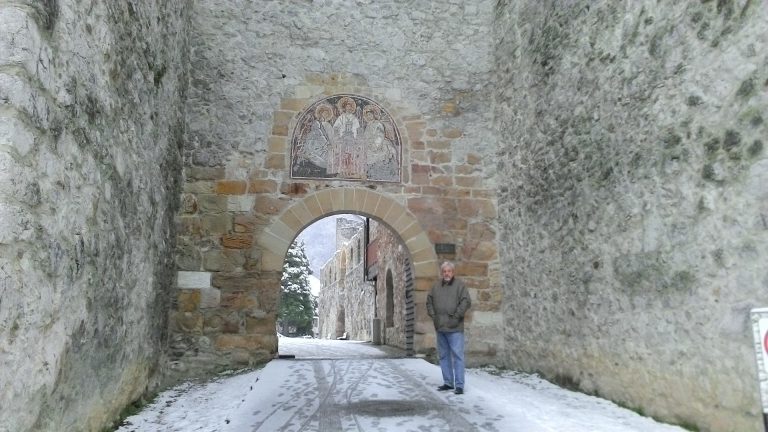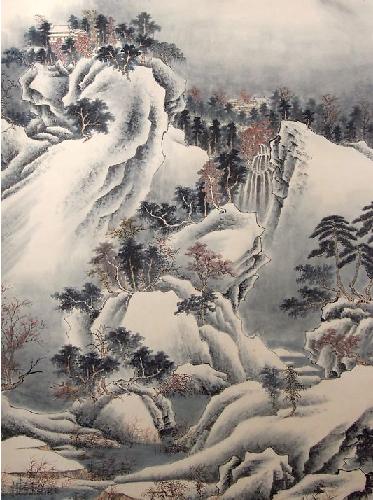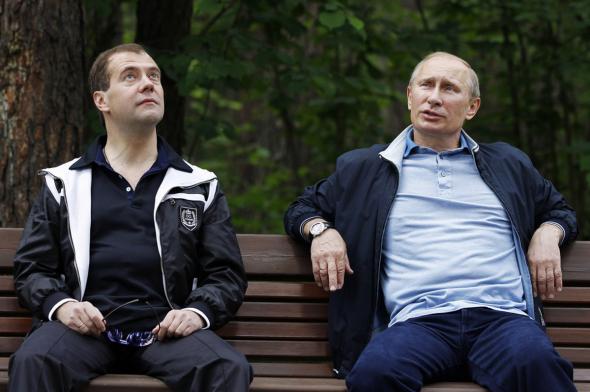Beyond Matrix, or the Tao of Postmodernity
V. V. Maliavin
Institute of Slavic Studies,
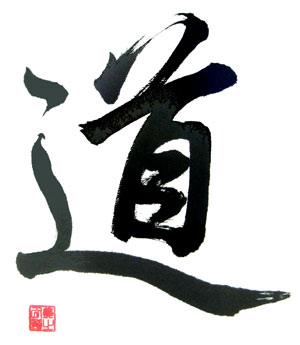
Tamkang University, Taiwan
It is well known that the passage to Postmodernity – if this term seems acceptable – has brought about dramatic changes in the concept of Praxis. The classical philosophy has treated Praxis as a conscious activity articulated through the opposition of self-sufficient subject and object, mind and matter, ideas and things etc. and the consequent assimilation of object by the subject. The merging of both in the post-hegelian thought has caused a profound crisis of traditional praxiology which stood on metaphysical realism and transcendental idealism. We are facing the fact that human beings are now inextricably involved with the outer world to the extent that it is virtually impossible to separate them. Since the rise of the phenomenological movement it has become a common point that we can get no perspective on things that does not involve already our practices.
The premises of traditional epistemology simply do not match the reality of informational technology and that accounts for much of the embarrassment and anxiety that is haunting the West amidst the on-going celebration of contemporary technical achievements. While European thought is feeling somewhat uneasy in this brave new world tripped of metaphysical substance and universal moral norms and consisting solely of events or pure acts, Chinese civilization, to provide but one example, has always been based on the holistic view of the universe where natural processes and human activity, spontaneity and work, life and technology are not opposed to each other and belong to the all-embracing continuum usually called the Great Way (Tao).
In the 2nd chapter of the Taoist classical book Chuang Tzu the world is described as just The Great Clod of all things which, as one might expect, “does not do anything” but produces out of itself, as the Void of the world cave, a Wind, i.e. a continuum of life energy. Human activity is not ontologically different from the nature of this infinite mass. Indeed, the classic manual of crafts in China, published in the 17th century, bears the title “Opening Things by the Work of Heaven” (Tiangong kaiwu). The man, as Chinese conceived it, fulfills the Heaven’s work, the human conscious schemes being not different in principle from the design of Nature, just like human writing (in character) is no different from the natural designs in their essentially decorative, i.e. esthetical and communicative nature.
In China’s intellectual tradition the above-mentioned unity is justified by the concept of “thusness” “that which is so of Itself” (zi ran) which is free from metaphysical oppositions between transcendence and immanence, universal and particular. Taoist zi ran means simultaneously the most general principle of existence and the singularity of each moment. It is related, no doubt, to the expressions “transcending everything by itself” (chao ran) and “standing in solitude” (du li) from the Tao Te Ching. Yet it is also closely connected to the notions of “multiplicity of subtleties” (chung miao), “multitude” (zhung fu) etc. in the same book. So, the concept of zi ran explains perfectly both the unity and multiplicity of being. By doing this, it does not establish any privileged way of representing reality but gives equal weight to every moment of existence no matter how short and fleeting. As the self-absent embodiment of Change it represents the reality of Event which comprises both virtual and actual dimensions in the vortex – Chinese used to say “Heavenly axis” – of Being.
As infinite finitude “thusness” has a direct embodiment in society too: a spontaneous and all-pervading quality of everyday life with its characteristic merging of virtual and actual, dynamism and standstill. Like nature and culture in Chinese theory, the everyday and the power are similar not by analogy but by their own limit, i.e. by their non-identity.
These starting points of Chinese (primarily Taoist) thought have far reaching consequences for human culture and practice. In their light the nature of both are not conscious action but “putting aside”, “leaving” (fang, she) whatever one may possess, “following” (shun, yin, sui) the spontaneous course of events and, finally, “reverting”, “coming back” (fan, gui) to the pristine state of initial Beginning that for ever precedes itself, an event avant la l?ttre. This means that event belongs to virtual reality, it is for ever anticipated and remembered – a perfect condition for culture, of course. Moreover, living by event gives priority not to action, but to effect, it is, in fact, the most efficient mode of existence. No wonder, this philosophy of “following the force of event(s)” is a foundation of original Chinese strategy which has recently aroused such a vivid interest in the West.
Now the constitutive ground – by itself groundless – of this everlasting self-transformation is the “minutest gap” (xi), a hairbreadth scission, a non-metaphysical difference which make possible the creation of the world through the continuity of being’s “thusness” with its endless renovation or, better say, eternal recurrence. In Western thought the memory of this uncreated reality of creative process has been almost obliterated in traditional metaphysics. Taoist thought has preserved a keen understanding of this fundamental layer of experience primary because its freedom of self-cultivation was not obscured or limited by the ideological demands of established doctrine. It is the reality which is variously – but consistently and even systematically – named by such terms as “small” (xiao), “minute” or “subtle” (wei), “miraculous” (miao), “one” (yi) and, finally, “confidence” (xin). The supreme position of the latter concept makes clear that the “primal matter” for the Taoists in not some kind of substance or essence, but relation and co-relation between things. This explains also the paramount importance attached by the Taoists to tradition as an act of transmission, passing over which precedes existence itself. The Tao can be transmitted but not possessed; it is something given before everything else and grasped after everything else.
All terms mentioned above relate to the micro-world of original perceptions, petits perceptions to use Leibniz’s expression which constitute the original matrix of experience. It is the source of existence as described in the “Song on Transmitting the Mystery” (???) ascribed to the famous Tang dynasty Taoist master Li Dao-zi, the founder of the Tai Chi Quan. It is written there:
“No forms, no images, the whole body is suspended in the void” (1).
The absence of forms and images does not imply here absolute nothingness, but something quite the contrary: the fullness of Being’s potential reduced to the invisible semen of things. It is the symbolic matrix of experience, the foundation of life itself which precedes and, in a sense, anticipates all things. It is not an actual, but, strictly speaking, a virtual reality located, according to the classical Taoist formula, “between presence and absence”. It is the Vortex of Tao within which myriads of symbolic, would-be worlds come into being and pass away before they acquire visible form. And it embodies the pure affection which is the driving force of countless transformations of life, an affection which serves the foundation of the non-objectified presence of the Will (yi). The Will, being a self-determining reality and a radical finiteness, constitutes the “subtle principle” (miao li) of every thing, the inner limit of existence, the source of all transformations.
The deepest level of Taoist experience – and, notably, the first step in the Taoist apprenticeship – is an unconditional “confidence” in the workings of Tao and the teacher who is representing them. These workings require confidence or trust because Tao’s reality is symbolic, or, to use the Taoist language, ‘heavenly” by nature.
How can the Taoist vision described above contribute to the overcoming of modern civilization’s crisis? The answer, as I have already mentioned, may come from many and sometimes unexpected sides. One of the most illuminating lessons known to me is provided by a well-known blockbuster “The Matrix” which has recently created a stir in the intellectual circles all over the world. Most critics in the West saw in it a gloomy allegory of the epistemological dead-end peculiar to the Western civilization which it surely is. The world of perfect simulation controlled by the Matrix means in fact the oblivion of the ontological depth of experience its reduction to an empty, purely visible likeness. It is not too often noticed, though, that the film suggests the way out of the Matrix’s trap and the one obviously connected with Taoism.
Let me remind here that the movie’s hero and the leader of resistance against the invisible yoke of the Matrix, a young man called Neo (i.e. New Man), studies ardently the Oriental martial arts and finally acquires an amazing speed of physical movements and no less outstanding power of intellectual intuition (to put it in quasi-schellingian terms). This romance of self-cultivation is supposed to remind of course that in the world of all-pervasive illusion only ascetic experience, an effort of self-transcendence can confirm the reality of one’s existence. Indeed, the world of Zion inhabited by those who fight against Matrix is the land of scarcity and hardships. The world of Matrix, by contrast, is brightly illuminated by electric, i.e. artificial and deceptive, lights. We are present at the “inversion of Platonism” predicted by F. Nietzsche: the world of cave has changed places with the real world outside.
An old-fashioned, purely external division between “real” and “unreal” worlds will not do, however. It is too arbitrary. The Zion is unable to maintain its identity and is conquered by the machines. The merging of illusion and reality remains the unshaken condition, the “stubborn fact” of the contemporary electronic media, its undisputable challenge. Yet the film, just like the world of media itself, offers opportunities to discover reality even within total illusionism. The eye of the camera and special effects are capable to tell more than physical eyesight and even imagination. The physical objects in the movie display an astonishing plasticity: human bodies can be suspended in the air, objects bend in all directions disclosing, as it were, their illusionary nature.. Some decisive scenes are presented in a very slow motion, creating the world that is folding up unto itself within just one passing moment; the world of what is often called “Bullet-Time”. This special effect unexpectedly draws us into the inner world of Neo. It is the condition of absolute, as Taoists used to put it, “purity and calmness” of consciousness. The nature of such calmness is “spiritual transformations” (shen hua) which are infinitely faster than even the flight of the bullet. The latter, as physical object, has a fixed trajectory consisting of mechanical repetition, while the spirit is capable of transforming, or “renovating” itself within the shortest possible interval of time. Spirit, in a word, is faster than any physical speed, even that of the bullet. But to be so fast it must be capable of “letting everything go” and liberating itself from all things.
This continuum of “spiritual transformations” which exists before the splitting of subject and object must be conceived as a pure interaction without separate agents, an omnipresent medium and the limit of all things. It is described in Taoist texts as “so big that nothing is outside of it and so small that nothing is inside of it”. This reality cannot be grasped by intellectual means, it requires an extremely heightened sensitivity inextricably related to one’s corporeal presence in the world or, better say, one’s active participation in what M. Merleau-Ponty used to call “the flesh of the world”. The capacity of our body to react to external influences even before they become the facts of consciousness has been occasionally noticed by Western philosophers, among them Spinoza who spoke of the “body’s reason” and Nietzsche who made even more favorable comments on the “great reason of the body”. Yet it is the Taoist tradition that provides us with the systematically explored experience of our primordial and impeccably intact being-in-the world. This discovery requires a persistent training of mind at releasing oneself, letting oneself go: the greatest spiritual concentration is achieved when in the absence of a fixed focus – and this is what a “bodily reason” means. A recently published text from Tai-chi chuan tradition says it straight:
“The knowledge of the mind leads to the knowledge of the body, but the knowledge of body is higher than the knowledge of mind” (2).
Neo’s interest in self-cultivation by means of Chinese martial arts is well founded. Attaining or rather restoring one’s original presence in the world, i.e. a free and all-pervading but not reducible to general rules, “renovating with every instant” communication was a real goal of the Taoist martial art’s masters in China. This is precisely “transmission of the secret” that lies at the heart of living tradition. Already in classical Taoist texts we find statements that “stillness within the motion” is the sure sign of the Sage. This formula means in fact the living, dynamic unity of mind and body which creates a thoroughly conscious movements and allows the adept of Tao to really live his life. The enlightened life in Taoism, according to a popular saying, is nothing but a “stillness-movement, opening-closing”. One of the recently published texts coming from the Yang school of T”ai-chi chuan contains the following description of such perfectly balanced and, therefore, integral existence:
“With inner motion we have awareness, with external movement we have knowledge. When inner motion reaches its limit there is an external movement. When awareness attains its fullness knowledge appears. It is easy to master movements and knowledge but it is hard to understand motion and awareness” (3).
This passage is a rather original attempt to formulate a relationship between two aspects of Tao: “Former Heaven” (xian tian ) and “Later Heaven” (hou tian ) or “No-Limit” (wu ji ) and “Great Limit” (tai ji ). This traditional non-duality is described here as continuity of inner “awareness” and objective “knowledge”. The perfection of sensitivity – fully natural in its own right – is named in T’ai-chi tradition “the interpreting power” (dong jin) (4). In the same collection of texts the meaning of the latter term is explained in the following words:
“The understanding energy of humans is the edge of sight and hearing, a capacity to change through encounter with circumstances. It produces miraculous results all by itself. The body attains enlightenment without effort, inner motion and external movement are permeated by awareness and knowledge”(5).
Let us note that the goal of Taoist cultivation, no matter how fantastic it may seem to the superficial observer, is the return to the original, perfectly natural fullness of one’s existence. It is the effortless effort, the way of releasing oneself in the seamless web of primordial existence and thus “forgetting” one’s individual Ego. This perfect naturalness, or “original nature” (ben xing) coincides, though, with the “spiritual illumination” (shen ming). Forgetting oneself takes us to the extraordinary level of awareness, i.e. perceptivity and sensitivity. Why? Precisely because this plenitude of Being is the principle of self-differentiating, boundless dispersion, the void, the uncreated Chaos and the pause, the break that constitute every single rhythm and, consequently, all interconnections within the living wholeness, the “one body” of the world. Continuum of the One, i.e. constant and all-pervading, Transformation (yi hua) is the circuit, the interpenetration of Being’s virtual and actual aspects. Participation in this vortex of the Way means in fact returning, or rather “inheriting” the source of every existence. Therefore, it grants the ability to foresee the coming events, to recall the future. This means also that the man of Tao acts contrary to the apparent tendencies, he dwells at the edge of things and is being permanently lost for the world. He goes a “reverse path” according to the Taoist dictum: “Those who go to the contrary will become Immortals. Those who follow suit will become ordinary people”.
The power of Matrix is derived from the capacity to make perfect imitations of things by means of logical analysis and intellectual understanding. Basically it is the power of schematizing which reduces things to external objects and technical tools. Neo acquires, or rather restores capacity of encountering the world in a direct, unmediated and holistic way and thus liberating the world, for it is acting knowledge that grants freedom. Neo even ceases to differentiate between perception and images, appearance and substance. Sophisticated technology of Matrix based on the logical oppositions of computer science simply cannot detect him.
Neo’s Taoist predecessor is the famous cook in the book of “Chuang-tzu” who cuts the ox without seeing it and even touching it with his knife. The butcher does his job simply by involving both himself and the ox into the irresistible, infinitely differentiated, perfectly musical, as it were, rhythm of life. His “pure” contact with the ox has no quantitative physical dimensions because this contact is mediated by the wholeness of self-differentiating Void. Like the “marvelous images” of the Tao vortex it is simultaneously present and not-present. This is why the ability of “understanding energy” implies the “absence of forms” which is in fact a form-generating propensity, a virtual existence. In the same vein, in the Chinese political tradition which since ancient times was heavily influenced by Taoism the ruler radiates the irresistible power of the universal dissolution, the power of the uncreated Chaos itself. He is really fantastic yet he is fantastically real. He is so frightening, to be sure, because he represents familiar images as something alien. In the words from Chuang-tzu,
Sitting like a corpse, he reveals the image of dragon.
In profound silence, he issues forth the deafening roar.
This is what the Taoist authors mean when they speak, as mystics all over the world do, about “miraculous matching” (miao qi) of the opposites. The Great Tao is the “spontaneous responding to influence” (zi ran gan ying). As “Song on the Transmission of Mystery” puts it in a seeming self-contradiction,
“Respond to the other, be so by itself”.
The T’ai-chi chuan masters comment on this statement metaphorically: one should be “vast as the ocean and empty as the sky” (6).
What we are dealing here with is essentially a sort of differential relation between two kinds of duration: a physical and a spiritual. Neo is not evading bullets, for the simple reason that “spiritual illumination” knows not yet objects. He is in some profound sense coexisting with them while being impenetrable for the limited physical forces. He does not look for the “matrix” as a sort of transcendent model of existence. He returns to the “semen” of things, the immanent source of life and finds abode in the infinitely small extra space of “spiritual transformation”. He does follow something, surely not things (he does not have individual Ego anyway) but what the Taoists used to call “the mother of stillness and movement”, “the profound impulse” (xuan ji), “heavenly impulse” (tian ji) etc. of universal transformations. This impulse is precisely “without forms and images” yet all-embracing and generating all things. Another T’ai-chi chuan master, Li Ya-xuan, defines the T’ai-chi skill as the ability
“To follow spontaneously the impulse and respond to changes” (7).
I find a rough Western correlate to this reality in Jille Deleuze’s concept of the fold which is described as the relatedness of actualization (the spirit) and realization (the body), a relatedness that actualization cannot fully realize and realization cannot fully actualize. The “heavenly impulse” is precisely the force of actualizing the virtual and providing virtual depth to the actual. The “crack of being”, the abysmal reserve of things left out in this interaction correspond, as Deleuze himself notes, to the circuit of Tao that stands for the ultimate reality in Chinese thought (8).
We can add now that living in the fold or in the virtual mode of the ever-passing Bullet-Time means sinking ever deeply in the dynamic of existence which comprises and blends both virtual and actual aspects. This mode of living grants the experience of one’s “genuineness”. It is brought from within and does not require the public recognition – a decisive break with the classical Western tradition from Aristotle to Hegel.
On the way from the seemingly real self (individual) to the real non-Self (the awakened Self) one passes through two main stages: first one should “forget oneself” and then self-forgetting should also be forgotten just like dispersal must also be dispersed and the will itself must be un-willed. The truth of this Taoist un-doing transcends all images and concepts, even the concept of pure, or empty interaction. The transition to the highest level of enlightenment through the unreserved “following the impulse” is described, for example, in the saying of Tai-chi chuan masters which is known to me only in oral transmission:
“With intention you are spiritual.
Without intention you are miraculous”.
????
????
This amounts to saying that the supreme achievement means leaving behind even one’s concentration. It is the absolute Void which precedes and makes possible the operational, qualitative void of pure relatedness. Or vice versa: recovering natural sensibility reveals the miracle of life: effects without efforts, efficiency without actions. Living by Taiji means exactly dwelling at the intersection of forms and formless, on a par with the “semen of things” where, according to Lao-tzu, we can contemplate the rise of all things and their return to the root. It is the “would-be” mode of existence in which things “spring from the void” and go through transformations before they get a fixed form; it is existing “between presence and absence”. It is a precisely the power of creative transformations that fills the whole world without being present at any particular place.
Interesting to say, the combination of “awareness” and “knowledge” in the text on T’ai-chi chuan quoted above corresponds to the notion of “perception” (zhi jue) in modern Chinese language. Indeed, under conditions of informational civilization the faculty of perception has acquired a much greater importance to the extent that it is likely to overshadow the intellectual reflection that has furnished the basis for various kinds of identities in the modern thought. Does not the contemporary electronic media actually disclose those extremely fluent, elusive images of compelling phantasm that we encounter at the level of primal perception? Does it not require from us the capacity to deal with the “underground of thought” directly, to be involved in the world of mediation with the fullest immediacy?
In previous times this sphere of “corporeal enlightenment” preceding culturally defined identity and the world of things in general constituted the contents of prophetic dreams and spiritual visions of a privileged few skilled in spiritual meditation.. Now they are accessible to the general public through the virtual reality of information technologies/ By giving priority to the dynamic presence of image as such the new epistemological condition stimulates the development of our perceptive abilities and, in a wider sense, spiritual sensitivity. Precisely these qualities we admire in the heroes of today’s digital capitalism: businessmen, managers, brokers, showmen etc. As P. Sloterdijk noted twenty years ago, “if mystical advances into the “innermost” zones of preindividual emptiness used to be exclusively a matter for meditative minorities, today there are good reasons for hoping that in our world torn by struggling identifications, majorities for such enlightenment will finally be found” (9). One should add that the new identity project based on perception opens a prospect of a new security zone for the Self amidst the cynical denial of privacy: it is precisely the sphere of perception which precedes reflectivity. This brings the social values of the information age even closer to the Taoist ideal of a sage who harmonizes the world while passing unnoticed by it.
Can’t we call it a providential twist of history when technological innovations generally assessed as detrimental to human spirituality turn out to be the means of recovery of that desperately wanted spirituality along new lines and in new forms? We are not yet ready to say what kind of identity can be nurtured by relying on perception and thus “forgetting”, un-doing our reflective ego. Perception is ambiguous because it discloses the non-availability of the world for the critical thinking. We can say only that this will be an identity of the Great Self whose very essence is a promise to come, a New Man as anonymous as he is real. In practice we will observe, probably, the creative collision of reflection and perception, the dynamic balance of reflective identity and the perceptive capacity culminating in the awareness of one’s self-transcendence through one’s opening to the world. This is precisely what is meant by the Taoist maxim: “Respond to others, be so of itself”. No passivity is presupposed here. In fact, to live by the creative impulse of events implies acting ahead of objective transformations.
The common ground of identity and perception is provided by the loss of their respective metaphysical foundations. For the reliance on perception implies the “acceleration in the void” beyond historical objectivity predicted by J. Baudrillard and many others. Yet even this destiny has much in common with the Taoist reality as pure co-relatedness “suspended in the void”.
So the Matrix – this truly postmodern version of apocalyptic revelation – is to be defeated not by confronting or outwitting it but by resorting to the edge of perceptive sensibility that is at work behind the dazzling abundance of experience. We can conclude that the dream of domination and the power of illusion created unexpectedly by the Enlightenment project establish in their turn the conditions for a “civilization of awakening” based on the acute perception of the inner source of experience.
1 Shen Shou, ed., Taichi chuan pu (The Genealogy of Tai-chi chuan), Beijing: Renmin tiyu, 1995, p. 236. On the authorship of this important text see: Chu Danxing, Taichi neigung jiemi (The explanation of Tai-chi chuan’s secrets), Taipei: Dazhan, 2005, p. 48.
2 Douglas Wile, Lost T’ai-chi classics from the Late Ch’ing Dynasty, Albany: SUNY, 1996, p. 46.
3 Shen Chou, ed. Taichi quan pu, p. 116. For a different English version of this text by Douglas Wile see: Douglas Wile, op.cit., p. 66.
4 The term jin refers to a peculiar “strength of sensitivity” which is related to the inner living unity of mind and body. It can be released only at the moment of relaxation and constitutes a real foundation of T’ai-chi chuan’s skill. It has no counterpart in Western languages and is translated most often as “inner” or “spiritual” force.
5 Tai-chi quanpu, p. 137. Cf. D.Wile, op.cit., p. 71.
6 Chu Dantong, op.cit., p. 50.
7 Li Ya-xuan, Yang-shi tai-ji quan jia quanzhen (An explaination of the genuine meaning of the Yang-style T’ai-chi chuan), Taipei: Iwen, 2003, p. 122.
8 J., Deleuze, The Fold?Leibniz and the Baroque. Minneapolis: University of Minnesota Press, 1993, p. 125.
9 P.Sloterdijk. Critique of Cynical Reason. Minneapolis: University of Minnesota Press, 1987. P. 74.
